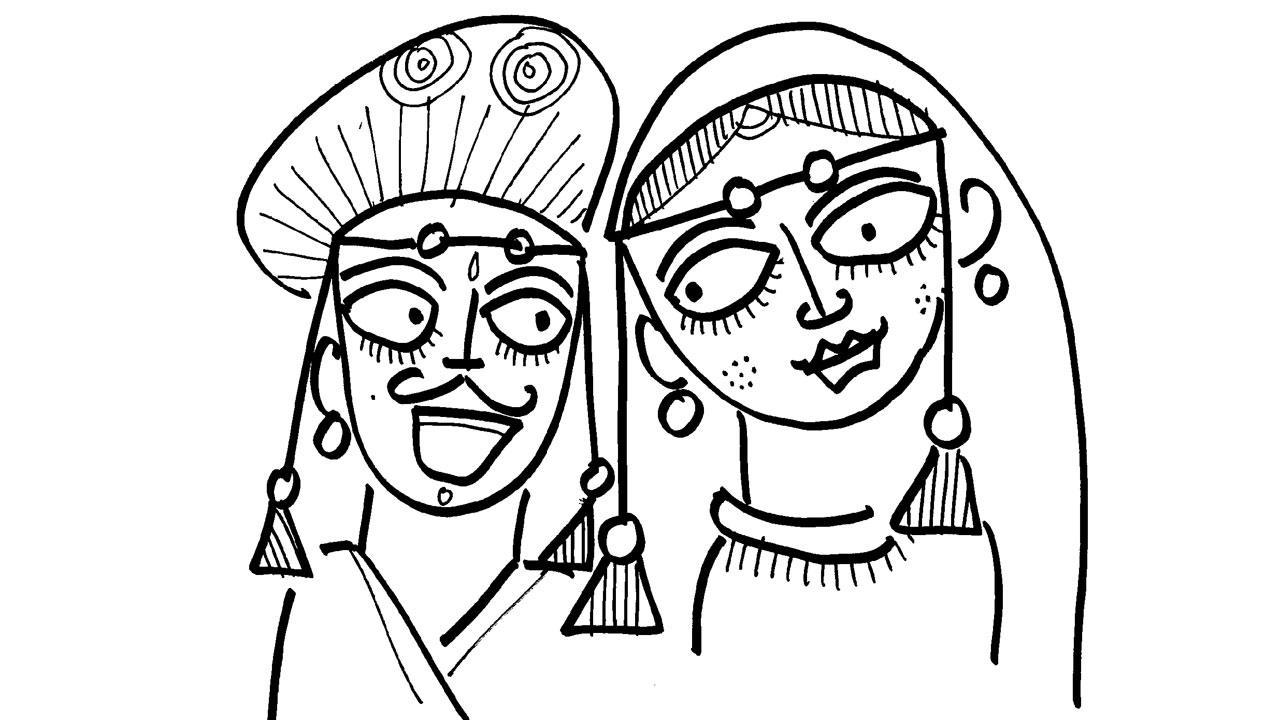Brown people became pink. Bandra mythology manifested itself in full glory: hollow, like the froth of a really good cappuccino.

Illustration/Devdutt Pattanaik
 There was a Marathi film based on caste. The songs were catchy; they set the dance floor on fire. But it was a gut-wrenching romance that ended with honour killing. Despite its dark theme, it was a super hit, so successful that it had to be turned into a Bollywood film to reach a wider audience. The remake was sanitised, glamorised and idiot-proofed, aligned to what filmmakers claimed was in line with the needs of the audience they knew best. Maharashtra became Rajasthan. Brown people became pink. Bandra mythology manifested itself in full glory: hollow, like the froth of a really good cappuccino.
There was a Marathi film based on caste. The songs were catchy; they set the dance floor on fire. But it was a gut-wrenching romance that ended with honour killing. Despite its dark theme, it was a super hit, so successful that it had to be turned into a Bollywood film to reach a wider audience. The remake was sanitised, glamorised and idiot-proofed, aligned to what filmmakers claimed was in line with the needs of the audience they knew best. Maharashtra became Rajasthan. Brown people became pink. Bandra mythology manifested itself in full glory: hollow, like the froth of a really good cappuccino.
Bandra is a Mumbai suburb, the home of Bollywood stars and major filmmakers, a metaphor for Bollywood glamour. It is a mythic world where India has no poverty, where everything looks like Switzerland, London and New York, and everyone is fair, bejewelled, fashionable and fabulous, even in heartbreak and homophobia.
For a long time, Bandra mythology worked with all kinds of Indians: local Indians, heartland Indians, global Indians, at least those who spoke Hindi. It created an aspirational urban India without being rooted to any India. It was a world where patriotism meant waving the national flag and devotion meant weaving lamps in temples, where harmony meant having nice Muslim friends, and nice Catholic teachers, where Madrasis and Bengalis had endearing accents, and Northeast Indians were invisible. Here romance meant stalking, religion meant being conservative, orthodox and uncool, shallowness was cute, and feminists were gorgeous women who could fight with swords, before marriage. Here patriarchy had glitter. It was wonderful, until it was not.
Also Read: Indian ships that sailed to Southeastern Seas
The bards of Bandra were not immigrants from faraway lands, like Andheri or Delhi or Patna. They were children of Bandra, and children of children of Bandra, who holidayed in Europe, but who enjoyed feudalism back home, when it came to exploiting staff and employees. Their imagination worked especially in new NRI markets, eager to discover Indian culture through lavish Sangeet ceremonies before marriage and even more lavish Karwa Chauth after marriage. This was the aspirational world for many, desirable in its misogyny, a Swarga without Naraka, until the globalisation dream was replaced by nationalistic rage.
As soon as politicians said Hindi is the primary language of India, audiences turned to over-the-top movies from Andhra, Kannada, and Tamil lands, full of dark-complexioned ungroomed hypermasculine heroes, hysterical mothers, in a milieu that was rural and raw, where sweat, poverty, violence and caste were raw inescapable realities. The Bollywood fantasies, based on Bandra mythology, full of metrosexual heroes, no longer connected. Turning Hindu gods into Harry Potter, Frodo, or He-Man, seemed more lazy than marvellous, demanding reinvention and reimagination. Maybe a road trip to Mumbra or a train ride in Virar fast local in rush hour, without Gossip Girls?
Devdutt Pattanaik writes and lectures on the relevance of mythology in modern times. Reach him at devdutt.pattanaik@mid-day.com
 Subscribe today by clicking the link and stay updated with the latest news!" Click here!
Subscribe today by clicking the link and stay updated with the latest news!" Click here!










